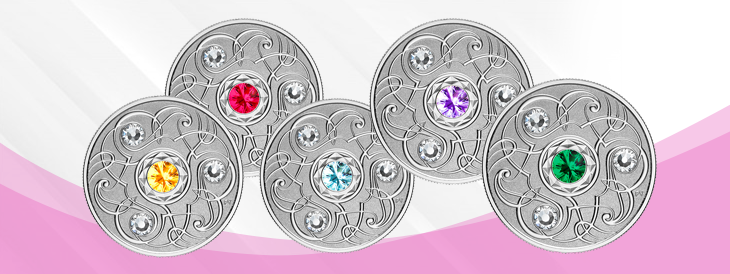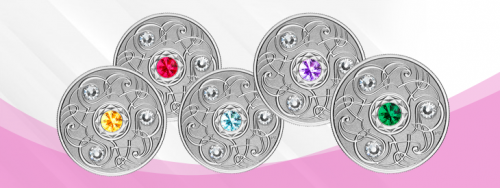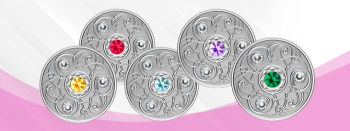Last updated on May 2nd, 2024 at 03:34 pm
Last Updated on May 2, 2024 Posted by Colonial Acres Coins
Multiple cultures, both Eastern and Western, hold traditions that certain stones bestow luck or other benefits on people born during a certain period. In addition to the ongoing series of Chinese zodiac coins, in 2020, the Royal Canadian Mint is releasing a 12-coin set of pure silver coins, one for every month of the year, featuring a Swarovski crystal representing that month’s birthstone. Understanding what birthstones mean in different cultures may give the set even greater significance.
Birthstones in the Eastern Tradition
Chinese philosophy holds that natural elements, such as minerals, trees, and flowers, offer people good luck based on the zodiac sign under which they were born. You can undergo a complex astrological reading to determine the exact birthstone, birth flower, etc., that will provide you with the best luck. These astrological calculations are extremely detailed and provide you with several different options for your lucky stone based on the year, month, and day of the week that you were born. According to this tradition, wearing any or all of your lucky stones may bring you good fortune.
Birthstones in the Western Tradition
The Western tradition of birthstones seems to stem from the account of Aaron’s breastplate in the Hebrew Bible. It was worn by the high priest of the Israelites and featured 12 stones, each representing one of the 12 tribes of Israel. Over time, people began to associate the 12 stones with the months of the year and the signs of the zodiac. Each stone became associated with a certain month, and people believed that they would have good fortune if they wore that stone during that particular lunar cycle. Over time, it became the custom to wear only the stone associated with the month in which you were born. That is considered your birthstone.
Birthstones in Recent History
Though the birthstone tradition is centuries old, the minerals associated with each month are subject to fluctuation. The names given to stones in ancient times do not necessarily match the minerals they identify today. Without a way to distinguish a stone’s chemical composition, ancient people identified stones by color, meaning that what they identified as a diamond, we may recognize as a white sapphire, and the words garnet and ruby could have been used interchangeably since both stones are red.
Furthermore, like many traditions, the birthstones associated with each month have evolved over time. For example, prior to the 20th century, turquoise was considered a birthstone for June; now it is associated with December. The Jewelers of America standardized the list of birthstones in 1912, and with a few alterations, that list has remained fairly consistent in North America ever since.
Birthstones in the Silver Coin Set
The Royal Canadian Mint is releasing one silver coin in the collection per month throughout 2020. Each features a circuitous pattern inspired by Celtic design and three clear, smaller crystals around the larger crystal in the middle reflecting the color of the birthstone for that month. In total, each coin contains four genuine Swarovski crystals. Each has a face value of five dollars.
Collectors can display the entire set in a special case identifying the birthstone for each month. However, silver birthstone coins also make personalized gifts to share with loved ones. If desired, the coins can be converted into jewelry. All you need is a bezel kit, which is sold separately.
Purchase Birthstone Coins From Colonial Acres
At this time, the Royal Canadian Mint has only released the birthstone coins for January through May. The rest will be released throughout the year on a monthly basis. Whether you’re interested in a single coin or the entire set, find what you want at Colonial Acres Coins.




